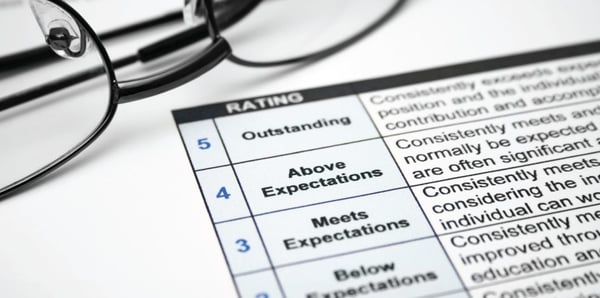
3 Vital Ways Corporate Culture Improves Employee Performance
By Candace Coleman, CultureWise Content Manager
The numbers are clear. Your company’s projections are off, and it looks like the reason is that employee performance is down. All the careful planning you put into sales, operations, and finance processes are being offset by a workforce that’s not operating at its potential.
You feel like you’ve done everything you can to help your team succeed. You hired good people, set achievable goals, and invested in the latest technology. You’ve even carved out the values you want your staff to follow and have them prominently displayed so that they stay top of mind. What more can you do?
The good news is that you’ve already identified the two things that are key to revitalizing your organization’s performance:
- Your company’s culture
- Process Implementation
You put some thought into shaping your organization’s culture when you identified the values you want your team to follow. And you already understand and observe the sound business practice of establishing processes to ensure stability in other areas of your company.
Now it’s time to look at how these two vital aspects of your business can be improved and combined to elevate performance and drive success.
Corporate Culture
Most well-organized companies experience some success in the marketplace. A new product or service may make them stand out, or maybe they hit on a great way to deliver what they sell more efficiently than anyone else. Perhaps they happened to jump into the competition at the right time in the right place with a talented and energetic staff.
Any of these factors can cause a company to soar for a while and give business leaders the idea that they’ve got the magic formula for successful performance. They’ve won the race!
But then the next race starts.
Great products, timing, and delivery aren’t sustainable in the long run because they can be duplicated or even bested by market rivals. And those talented employees may be inclined to move on to the next company poised to make a big splash. The staff that sticks around can lose their drive when the company’s temporary shine starts to fade. That’s when performance declines.
In the blink of an eye, a mediocre year can follow a great one just because the competition upped their game.
So what do companies that succeed quarter after quarter have that bolsters performance regardless of marketplace ups and downs? An extraordinary organizational culture.
Exceptional business leaders with a history of success don’t just hire great people. They intentionally cultivate their corporate culture to bring out the best in their people, year in and year out. Their culture drives consistent, top-level performance that makes them marketplace titans.
Process Implementation
An important distinction to make about culture is that it isn’t found in values statements, as inspiring as they may be. Culture is an organic part of a company that shows up every day in the behaviors and attitudes of the people who work there.
Just like other areas of your business that would unravel without sound processes in place, your organization’s culture can be methodically enhanced and reinforced. As CultureWise founder and author David Friedman points out:
“The most successful business leaders approach their work on culture as intentionally and systematically as they approach their hard-core business processes. They understand what a differentiator culture is, and they seek ways to be more rigorous and process-oriented in how they build, teach, and nurture it.”
What does that look like? From a practical standpoint, a systematic program to improve company culture should:
- Clearly define the behaviors that sustain performance levels
- Consistently teach and discuss these behaviors
- Provide methods to practice the behaviors so that they become habits
When you set up a process to communicate about and reinforce the behaviors that define your company, you’re operationalizing your culture. You’re building a system that will make these behaviors stick—and that process implementation will generate consistent performance.
3 Ways Your Company Culture Can Improve Performance
If you peel back the layers of an underperforming workforce, three telltale signs usually appear:
- Disengagement
- Low Motivation
- Poor Alignment
A systematic program to improve and develop organizational culture can turn all three areas around.
Engagement
Employee engagement is defined as the level of connection that people feel for their workplace or job. Workers tend to be divided into three categories: Actively Engaged, Not Engaged, Actively Disengaged.
A 2019 Gallop poll shows that most American workers fall into the middle group. Unlike actively engaged or actively disengaged people, 51% of people simply don’t have a strong feeling about the company they work for. They may find their position relatively enjoyable, but they aren’t inclined to do anything more than what’s written in their job description. To them, work is a paycheck.
People who aren’t engaged may do a reasonably good job most of the time, but they feel no incentive to do more. They also succumb more easily to “greener pastures” because they have no significant attachment to their employer.
A high performing culture generates engagement. One study shows that companies with strong cultures have a 72% higher engagement rating.
In part, that’s because people feel connected to a company that prioritizes ways for them to succeed individually and as a team. They tend to trust an employer who understands the importance of bringing company values to life. It gives people a way to physically and emotionally walk the talk.
They feel like they don’t just work for the company; they are the company. Performance becomes a matter of pride.
Motivation
When people are engaged, they become more motivated to do their best. But they can’t perform at top levels unless they clearly understand what’s expected of them.
A culture in which a company’s standard behaviors are systematically reinforced provides a “playbook” for employees to follow. People know how to respond to any situation by applying the tactics that are spelled out in the company’s operationalized culture.
The culture provides a secure framework that builds confidence. It’s like an energy source that steadily fuels people to do their best work.
Once people have a solid understanding of what they’re supposed to do and how they’re supposed to do it, they start to excel. And when that happens, they really begin to enjoy their job. They feel like they’re making a meaningful contribution to the organization and wouldn’t think of doing anything less than their best work. When people are motivated, performance goes up across the board.
Alignment
A company that clarifies expectations through its culture structure makes it easier for employees to be team players. There’s no confusion about the behaviors that define the way people are supposed to work together. And all staff members use the same terminology, a “common language,” to talk about those behaviors.
An aligned workforce communicates more effectively because a universal language is in play. Employees appreciate and can rely on a tangible way to tune in to the same frequency. Misunderstandings are limited, and when they do happen, they’re simpler to sort out.
Perhaps most importantly, a strong culture makes it easier for people to feel like they belong. As Natalie Baumgartner noted in the Harvard Business Review, people want to be employed “where they can intertwine their beliefs with those of the company and work together on a common vision of purpose and success.”
If employees feel connected to a company because of its culture, they’re surrounded by others drawn to the company for the same reason. An internal trust builds up, and people are more in sync. They consistently perform better because they’re proud to be part of the team, and achieving team success matters to them.
Culture Drives Profit
If mediocre performance is limiting your company’s success, merely trying to get employees to work harder won’t be very effective. What will? Improving your organizational culture so that it restores your people’s connection, enthusiasm, and a team-first mentality.
A culture initiative can be game-changing in the way your employees approach and enjoy their jobs. One of the most important by-products of improving your culture is sustained, top-level performance—and that generates profit. As David Friedman puts it:
“Quite simply, people who are more engaged, more aligned, and more motivated will work harder, longer, and better than those who aren’t. Creating an engaged workforce is how you unlock all that untapped potential, that discretionary effort that’s inside of every one of your people. And here’s the amazing thing: it almost all drops to the bottom line.”
When you intentionally improve and shape your culture—and have a systematic way for employees to benefit from it—performance will start to rise in many ways. People will:
- Be more accountable. They’ll focus on results more than perceived effort.
- Take ownership of problems instead of giving up or leaving them for someone else.
- Look for ways to improve processes to increase efficiencies.
- Make accuracy a priority and have their eyes on details instead of shrugging them off.
- Have an organizational standpoint instead of harboring a personal agenda.
- Take the quality of their work personally because they are more vested in their role.
These are just some of the ways your culture can drive performance. The benefits of investing in your company’s culture manifest themselves in just about every aspect of every job—and your numbers will trend upwards.
It’s Game Time
When you’re ready to tip the scales in your favor, what’s the best way to operationalize your company’s culture?
There are two ways to approach the project: use internal resources to forge a dynamic new model for your company’s culture or engage professional assistance.
You may have the right staff and capacity for this project in-house but aren’t sure how or where to start. One of the best sources of information is David Friedman’s Culture by Design, which provides a step-by-step guide to strategically rebuild corporate culture. The second edition of this highly rated book was recently released, and you can download two chapters at no cost.
The other option is to engage a pro to help you develop a culture initiative. You can hire a consultant to give you advice, or you can choose to go with an operating system for culture like CultureWise, which will provide a constant source of inspiration and development for your team.
Both the standard and custom versions of CultureWise have helped hundreds of companies elevate performance and generate organizational success.
However you decide to move forward, you’ve made a critical decision that has the potential to revitalize your company’s performance.

